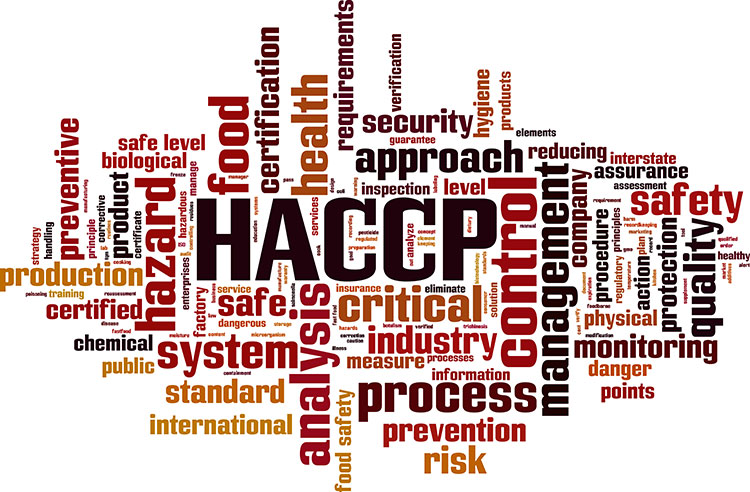
HACCP Plan Template
HACCP Plan Template
A HACCP plan template is a document that is completed to summarize control measures implemented at critical control points for significant food safety hazards identified in a particular food process.
Most organizations implement HACCP based on Recommended International Code of Practice General Principles of Food Hygiene CAC/RCP 1-1969, Rev. 4-2003 which contains guidelines for implementing a HACCP System.
Prior to application of HACCP, prerequisite programs such as good manufacturing practices should be in place to ensure that fundamental hygienic conditions are in place.
The key to any HACCP system is to identify Critical Control Points (CCPs) and ensure measures are in place to control the hazards identified, these controls are summarized in the HACCP Plan template.
A HACCP plan template should look like the table summarized below:
| Step | Hazard | Control Measure(s) | CCPs | Critical Limits | Monitoring | Corrective Action | Record(s) |
When conducting a HACCP study there are a number of preliminary steps which should be conducted to assist in identifying hazards, these include: assembling a multi-disciplinary HACCP team with knowledge of the process and HACCP. The HACCP team should generate a product description with relevant safety information such shelf life and storage conditions and also identify intended use of the product including the end user such as vulnerable members of the population. The last steps before conducting a Hazard Analysis are to draw a flow diagram of the process for all steps from material intake to delivery to the customer and then to physically verify the flow diagram on-site.
A HACCP system is developed based on seven principles:
- 1. Conduct a hazard analysis and identify significant hazards in the process.
- 2. Determine the Critical Control Points (CCPs) for the control of significant hazards identified using the decision tree.
- 3. Establish the critical limit for each critical control point. These are the limits outside of which the hazard would be out of control.
- 4. Establish monitoring procedures to ensure the hazard is controlled at the critical control point.
- 5. Confirm the corrective action to be taken the result of monitoring indicate the CCP is outside of critical limits.
- 6. Verify that the HACCP system is working effectively.
- 7. Establish HACCP documentation including procedures and records.
So looking at the HACCP plan template, the step is the step number identified in the process flow diagram. A hazard can be biological, chemical or physical for example Salmonella which could cause food poisoning, Peanuts which could cause an allergic reaction or Glass which could injure the consumer.
Control measures could be pasteurization, segregation or filtration for example depending on the hazard. Pasteurization is a common Critical Control Point which has specific validated Critical Limits which are defined as 71.7°C for 15 seconds.
Automatic continuous monitoring is preferred as it provides more assurance but in some cases this is not possible and monitoring is manual. Corrective action required can be to stop the process and quarantine affective product until it is determined that the product is hazard free or the product is reprocessed. Records are important for ‘due diligence’ to show that hazards were identified and all reasonable precautions were taken to eliminate the hazard.
Below is a HACCP plan template with example information for the hazard E.coli CCP of pasteurization
| Step | Hazard | Control Measure(s) | CCPs | Critical Limits | Monitoring | Corrective Action | Record(s) |
| 1. | E.coli | Heat Treatment to kill E.coli | Pasteurization | Minimum 71.7°C for minimum 15 seconds | Automatic monitoring | Quarantine affected product & reprocess | Process Record 1 Corrective Action Record 1 |

